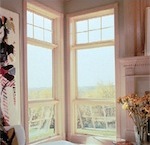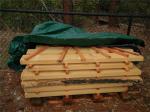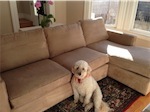Have you ever felt drafty in some rooms in your house? The draft can be coming through some hidden gaps or holes in your house. Most homes have gaps and holes in the ceiling, floors and exterior walls that let a lot of cold air into the house in the winter and warm air in the summer. Adding up all those gaps and holes can equal to a three square foot hole. Sealing those gaps and holes to stop air infiltration (air sealing) can save you 20% or more of your energy bill.
Everyone knows about insulation to keep the house warm. It’s like having a sweater on the house. Infiltrated air can bypass most insulation installations. Sealing air leaks is a complementary way to improving heating/cooling efficiency. It’s like having a wind-breaker over the sweater. We all have experienced that in a windy winter day, putting a wind-braker on top of a sweater is the best combination to stay comfortable.
Here are some tips for testing and sealing air leaks from the Department of Energy.
- Caulk and weatherstrip doors and windows that leak air.
- Caulk and seal air leaks where plumbing, ducting, or electrical wiring comes through walls, floors, ceilings, and soffits over cabinets.
- Install foam gaskets behind outlet and switch plates on walls.
- Inspect dirty spots in your insulation for air leaks and mold. Seal leaks with low-expansion spray foam made for this purpose and install house flashing if needed.
- Look for dirty spots on your ceiling paint and carpet, which may indicate air leaks at interior wall/ceiling joints and wall/floor joists, and caulk them.
- Cover single-pane windows with storm windows or replace them with more efficient double-pane low- emissivity windows.
- Use foam sealant on larger gaps around windows, baseboards, and other places where air may leak out.
- Cover your kitchen exhaust fan to stop air leaks when not in use.
- Check your dryer vent to be sure it is not blocked. This will save energy and may prevent a fire.
- Replace door bottoms and thresholds with ones that have pliable sealing gaskets.
- Keep the fireplace flue damper tightly closed when not in use.
- Seal air leaks around fireplace chimneys, furnaces, and gas-fired water heater vents with fire-resistant materials such as sheet metal or sheetrock and furnace cement caulk.








